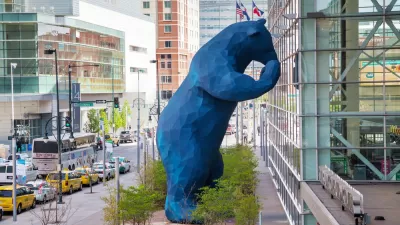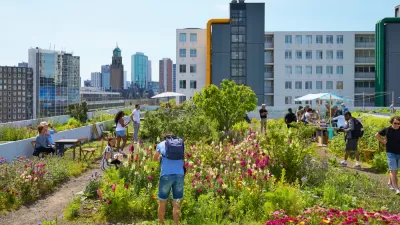The Denver Post gives a preview of some of the big questions facing Denver voters in November.
Jon Murray takes a dive into Referred Questions 2A through 2H and Initiated Ordinance 300 on the November citywide ballot in Denver.
Referred Questions 2A through 2H pitch a $937 million bond package that includes funding for more than 460 projects across Denver. There are projects under the categories of transportation and mobility (2A), cultural facilities (2B), and ambulatory care center (2C), public safety facilities (2D), library system renovations (2E), parks and open space facilities (2F), and general public facilities. According to Murray the entire package is the first general obligation bond requested of voters since 2007’s voter-approved $550 million Better Denver Bonds, which will wrap up its building programs this year.
Then there is Ordinance 300, which is a voter-initiated ballot item "[aimed] to reduce Denver’s urban “heat island” effect by requiring the roofs of large new buildings to incorporate rooftop gardens or solar panels," according to Murray.
The green-roof requirements — along with new standards — would apply to most new buildings of at least 25,000 square feet, to existing buildings above that threshold when their roofs are replaced, and to existing buildings when additions cause their floor area to reach that threshold. Solar panels or “green roof” components would have to cover at least 20 percent of a roof’s surface, depending on the building’s size.
According to Murray, building and commercial real estate interests are gearing up to fight the measure.
FULL STORY: Denver 2017 election guide: A $937 million bond package and the Green Roof Initiative are on the ballot

Study: Maui’s Plan to Convert Vacation Rentals to Long-Term Housing Could Cause Nearly $1 Billion Economic Loss
The plan would reduce visitor accommodation by 25,% resulting in 1,900 jobs lost.

North Texas Transit Leaders Tout Benefits of TOD for Growing Region
At a summit focused on transit-oriented development, policymakers discussed how North Texas’ expanded light rail system can serve as a tool for economic growth.

Why Should We Subsidize Public Transportation?
Many public transit agencies face financial stress due to rising costs, declining fare revenue, and declining subsidies. Transit advocates must provide a strong business case for increasing public transit funding.

How to Make US Trains Faster
Changes to boarding platforms and a switch to electric trains could improve U.S. passenger rail service without the added cost of high-speed rail.

Columbia’s Revitalized ‘Loop’ Is a Hub for Local Entrepreneurs
A focus on small businesses is helping a commercial corridor in Columbia, Missouri thrive.

Invasive Insect Threatens Minnesota’s Ash Forests
The Emerald Ash Borer is a rapidly spreading invasive pest threatening Minnesota’s ash trees, and homeowners are encouraged to plant diverse replacement species, avoid moving ash firewood, and monitor for signs of infestation.
Urban Design for Planners 1: Software Tools
This six-course series explores essential urban design concepts using open source software and equips planners with the tools they need to participate fully in the urban design process.
Planning for Universal Design
Learn the tools for implementing Universal Design in planning regulations.
Ascent Environmental
Borough of Carlisle
Institute for Housing and Urban Development Studies (IHS)
City of Grandview
Harvard GSD Executive Education
Toledo-Lucas County Plan Commissions
Salt Lake City
NYU Wagner Graduate School of Public Service




























